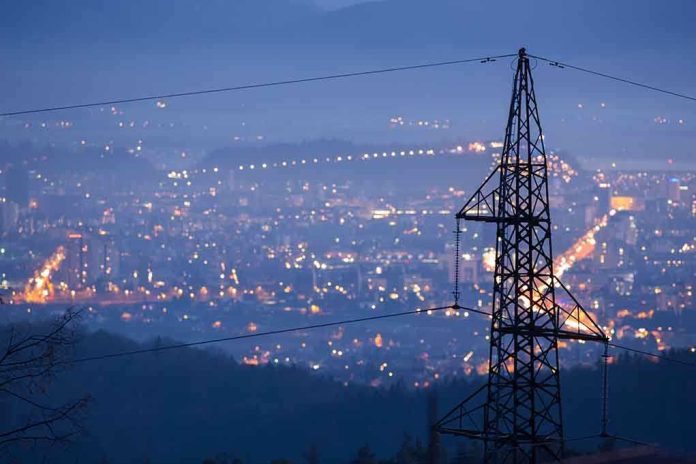
America’s electric grid has more than enough power for everyone, yet monthly bills keep climbing—revealing a hidden battle over control, profit, and the future of energy that millions of households never signed up for.
Story Snapshot
- Electricity bills in the U.S. have soared, hitting record highs despite abundant supply.
- AI data centers, electrification trends, and aging infrastructure drive new demand and costs.
- Utility profit incentives and regulatory bottlenecks exacerbate rising consumer prices.
- The affordability crisis is intensifying, with no clear solution in sight.
Why Abundant Electricity Isn’t Making Power Cheaper
Residential electricity prices in America have risen a staggering 32% over five years, with 2025 rates averaging 17.11¢/kWh—despite the nation generating more than enough power. The paradox is rooted in a system where the grid’s aging infrastructure, surging demand from emerging technologies, and complex regulatory hurdles all combine to inflate costs. Unlike past shortages, today’s crisis isn’t about supply but about the cost and complexity of delivering that supply through a congested, outdated network.
Utilities invest billions in grid upgrades for reliability and resilience, passing those expenses directly to consumers. Time-of-use pricing schemes amplify the pain, making power especially costly during peak hours. Regulatory delays slow the rollout of new transmission lines and generation projects, locking in higher costs for longer. The result is a system where plentiful electrons exist, yet the price of keeping the lights on keeps marching upward.
AI Data Centers: The Unseen Power Drain
Big Tech’s relentless push for AI and cloud computing has created a new class of electricity super-consumers. Data centers now devour 4% of U.S. power—projected to triple by 2028—forcing utilities to scramble for capacity and infrastructure upgrades. These digital fortresses often cluster in regions with cheap electricity and weak regulatory oversight, driving local prices higher for everyone else. Senate Energy Committee Chair Mike Lee likens the grid to an old highway buckling under the weight of AI’s demands, foreshadowing even steeper bills as the arms race accelerates.
Households across America are footing what critics call an “AI power tax,” having never voted to subsidize Big Tech’s insatiable appetite. Congressional hearings and policy debates circle around grid modernization, permitting reform, and ways to balance economic growth against consumer protection. Yet, as utilities warn of more hikes without urgent infrastructure investments, the gap between supply and affordability only widens.
Utility Profits and Regulatory Gridlock: The Costly Hidden Hand
America’s regulated utility monopolies operate under guaranteed profit structures, incentivizing constant infrastructure spending—and, by extension, rate hikes. A University of California, Berkeley study found utility shareholder returns averaging 10%, double the standard benchmark, costing consumers an extra $7 billion a year. The Center for American Progress highlights dozens of utilities citing shareholder returns as justification for higher bills, even as the underlying supply remains robust.
State Public Utility Commissions (PUCs) and the Federal Energy Regulatory Commission (FERC) struggle to balance reliability, affordability, and investment needs. The regulatory process, often slow and contentious, creates bottlenecks that drag out new projects and upgrades for years—locking consumers into higher prices while infrastructure struggles to catch up. Policymakers face mounting pressure to streamline permitting and encourage renewables, but entrenched interests and bureaucratic inertia keep the status quo firmly in place.
The Real Impact: Who Pays—and What Comes Next?
Higher electricity bills hit low- and middle-income households hardest, with some regions suffering steeper increases due to local data center concentration and grid congestion. Rising costs feed inflation, strain family budgets, and spark political backlash over utility profits and consumer protections. As electrification trends—EVs, heat pumps, smart devices—drive household demand higher, the risk of energy poverty grows more acute.
Utilities, policymakers, and tech giants all jockey for influence over the grid’s future. Industry advocates push for faster permitting and massive infrastructure investment; environmental groups blame sluggish clean energy deployment and regulatory rollbacks. Expert consensus points to infrastructure congestion, transmission bottlenecks, and surging AI demand as the core drivers. The debate over solutions—more renewables, streamlined regulation, or reformed utility incentives—remains unresolved, leaving millions of Americans caught in the crossfire of progress and profit.
Sources:
League of Conservation Voters (2025)
Resources for the Future (2025)









